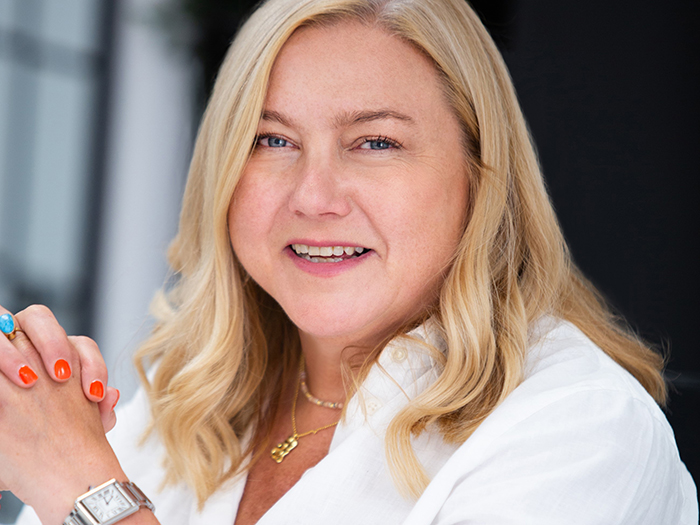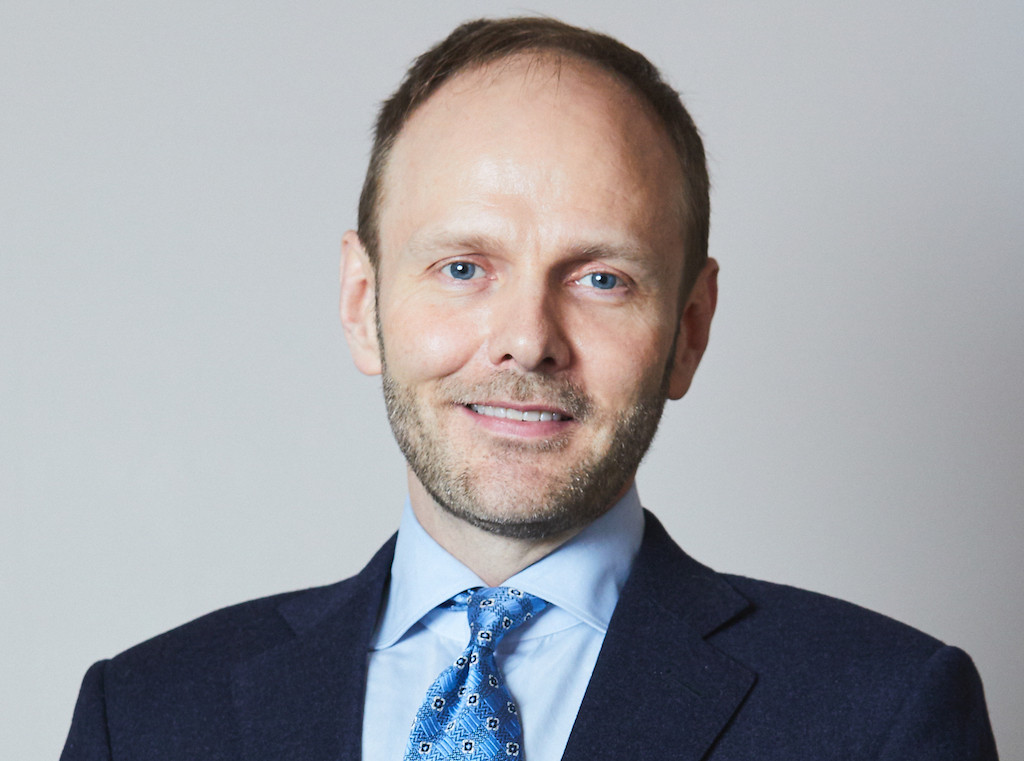The Insurance Communicators: 8 Questions for Mairi Mallon, Founder and CEO of Rein4ce

The professionals that focus on communications, public relations and marketing in the insurance industry perform a vital function. They’re the ones that build needed bridges between the industry, the media, policyholders and other key players.
It’s possible that insurance will never be fully understood by significant portions of the public and private sectors. But that doesn’t mean these communications professionals don’t keep trying!
In this series from Risk & Insurance, we interview public relations and media relations professionals who have spent a significant portion of their professional lives in the insurance space. The goal of the series is to give the industry and the world at large a better idea of the important work these professionals do.
In this installment, we speak to Mairi Mallon, founder and CEO of Rein4ce.
Risk & Insurance: How and why did you get involved in journalism to begin with?
Mairi Mallon: My sister is a journalist and her job looked interesting. I was working as a TV researcher at the time, and there were crossover skills. I did a post-graduate journalism course at Napier College in Edinburgh, and that set me on my way.
My first job was in a local paper, where I earned my spurs getting right the names of prizewinners at agricultural fairs. I went on to work at a news agency in Glasgow, followed by two national newspapers in Scotland.
An opportunity came up for my then-fiancé (and now husband) and me to work in Bermuda as journalists. The sunshine appealed, as well as a change of scene. I ended up staying there five years, running the business desk at the local newspaper, which introduced me to the world of reinsurance.
R&I: When you started covering insurance in Bermuda, what about the field drew you in?
MM: I started covering insurance in 1999 and, like many people who work in insurance, I didn’t make a conscious decision to work in the sector and ended up in the field by chance. My editor asked me to cover the business desk for two weeks, and five years later, I knew more about insurance, reinsurance and captives than any lay person ever should.
At first, I was deeply uninterested, but I quickly worked out that it was a fascinating sector to cover. At the time, Bermuda mostly dealt in catastrophic risks, so I learned how to read hurricane maps and was mentored by senior reinsurance executives, who took the time to explain the industry to me over my first year reporting on the sector. I was also the Reuters stringer there, and I was responsible for reporting on the insurance of mega-incidents and disasters, which was of great interest to the wider business press.
R&I: What led you to make the switch to the public relations side in 2005?
MM: After returning to the UK from Bermuda with a toddler and a baby, I was a part-time freelance journalist and part-time mum for a while. I freelanced for most of the insurance trade press globally, but was also asked to do corporate writing for some of the companies I had covered. Put simply, it paid a lot more than journalism.
Through copywriting for (re)insurance organizations, I realized there were opportunities for expanding into PR work. I also had excellent contacts with senior people in the industry who knew and trusted me — and we knew how to work together.
R&I: What did you observe that led you to believe you could be successful if you founded your own company?
MM: Many (re)insurance companies I dealt with as a copywriter and journalist were not focused on communications, and I believed I could help them do much better. I knew these companies inside out, not because anyone was telling me to research them, but because I was interested. I knew there were good stories to tell, and I knew how to do it. While the larger companies had in-house public relations teams, others hadn’t even thought about PR. It seemed like an open goal.
R&I: As you consider the needs of your insurance clients, what are some of the prominent communications challenges they face?
MM: (Re)insurance companies are brilliant with clients and brokers but are not so good at telling their own stories. Sometimes, they don’t fully appreciate how important their industry is to the world. The sector has an image problem: The public perception of (re)insurance is that it’s boring at best, and at worst does not pay claims when needed. That is a wider, global perception problem, but many individual companies do not pay enough attention to the way they are perceived in the insurance market.
You can have an amazing firm that is doing all sorts of innovative things, but to the rest of the market, it’s just another insurance company. If you want to recruit people, you need to show the market what a fun industry it is to work in; if want to improve your rating, you may need to shout about your enterprise risk management. You want your share price to go up? Talk about how good your results are and how buoyant the sector is.
People in the industry tend to be modest and risk-averse — they are reserved and don’t want to shout about their accomplishments — but companies should talk about their successes more.
R&I: What communication strategies have been successful for you and your clients? Why do you think those strategies worked?
MM: The first thing we do is work out what a client wants to say and who they want to say it to. It’s amazing how many companies don’t start with that and end up talking to the wrong groups of people. Insurtechs are particularly guilty of talking to other startups and telling each other how amazing they are, when they should be learning the vocabulary of the people buying their products — insurance companies — and trying to explain their offerings to them.
It’s also important to think about geographies. Where do you want to be known — London, Europe, Bermuda, the U.S.? Where is your key market? You might spend six months trying to get into the Financial Times or on CNBC when you might be better off being featured in Bermuda’s Royal Gazette, which is a tiny paper on a tiny island but has a huge reach in our market.
Sometimes LinkedIn is the best way to reach your target audience, or a visual campaign with Instagram if you’re trying to recruit graduates. Young people don’t like paywalls, and many articles are not social media-friendly — sharing something behind a paywall is not ideal. So take that into consideration when you’re talking to the trade press. Top executives will likely have subscriptions, but young people and some non-trade specific investors will not.
If you only need to reach 50 people, it may be best to meet them individually or even take them all out to lunch. We are still a face-to-face market overall — go where your clients go.
You’ve got to be interesting and engaging, and make sure what you’re saying is relevant to your audience. To identify these, we “story mine” with executives and research the companies, or survey similar companies, and identify common pain points in the market.
It’s helpful to think about one person and what would appeal to them when building your communications strategy. A targeted, sniper-like approach to communications is better than scattergun.
R&I: What’s good about the insurance trade publications? What could they do better?
MM: We’re lucky in insurance to have a wide variety of publications that understand what people in the market want to read. I always tell clients to spread their marketing budget around the publications rather than on just one or two. It’s in all our interest to have a healthy trade press that is well funded.
The trade press could have better layouts, as many can look old-fashioned. However, they reflect their readership, who want a lot of information and are not design-led. They do read trade publications cover to cover.
They could also make more use of video, and I’d advocate getting rid of expensive paywalls. I know subscription is their business model, but it makes articles difficult to share either on social media or with colleagues and clients.
R&I: What’s your advice to a young or newer communications professional in the insurance field?
MM: Read, read, read! There are plenty of trade press publications and material handed out at conferences that will improve your knowledge and writing.
Learn to write well; it’s a skill that will stay with you through your life.
Accuracy and consistency are important, as you’ll be working with some of the best and highest-quality companies in the world. Any press releases or editorials you send out must be print-ready, so check, check and check again.
Hone your skills in public speaking — go on some presentation skills courses. You will have to present all sorts of things to all sorts of audiences during your career.
It’s a sociable industry. Accept invitations to gatherings to build personal relationships and deepen your knowledge.
Make connections with your peers, as one day they’ll be heads of industry, and when they are, you’ll have all grown up together.
Media contacts are vital. No matter how junior you are, meet for coffee, drinks or at conferences.
If you’re not sure whether you’d prefer working in-house as part of a comms team or at a PR agency, try out internships. They suit different types of people: There’s more variety and spice in an agency, while in-house can be more in-depth and stable.
Working in public relations can look glamorous and exciting to outsiders — and it is, sometimes — but it’s also demanding. You are dealing with everyone from senior executives to junior marketing people who are just starting out and don’t really know what they’re doing. Above all, you need to work hard for your clients and give them sage advice. &










